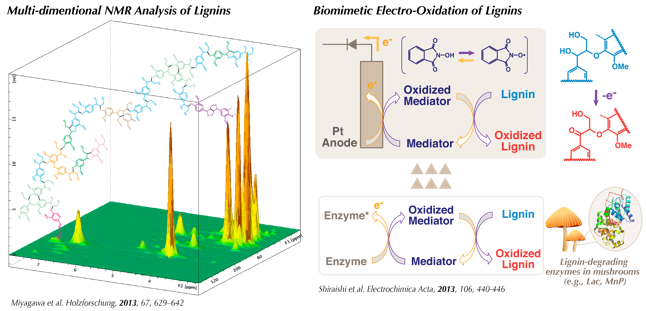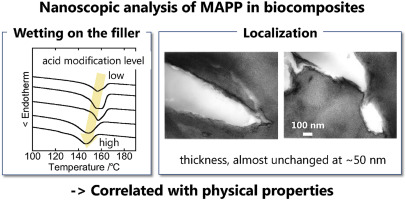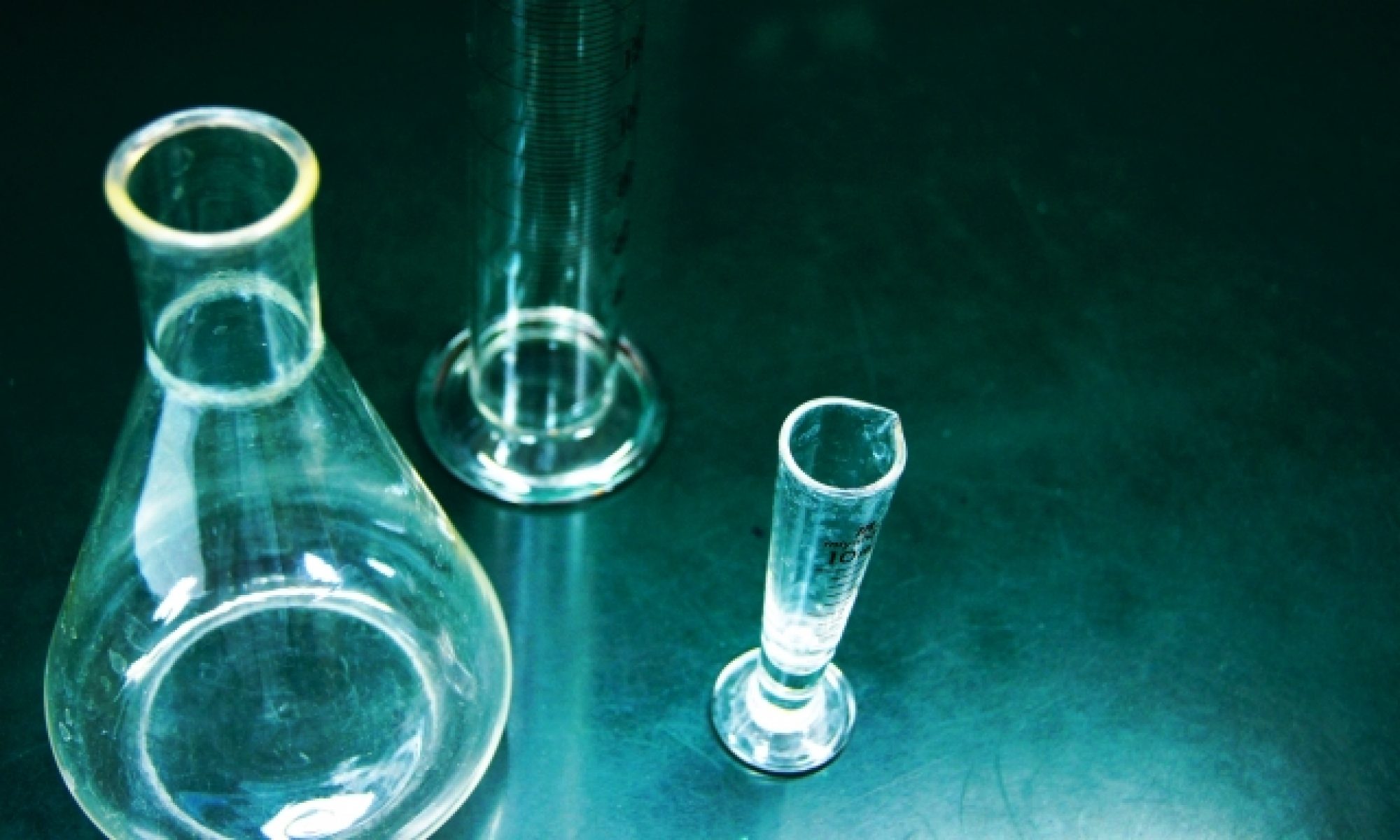Biobased material (biomaterial) is a general term for “organic materials produced by living organisms”, and is a group of substances produced by organisms for some purpose. Elucidation of the structure and biosynthesis of biological materials and their production purpose (in other words, functionality) can be important hints for developing new materials using natural wisdom. We are conducting researches from the basics to the application of biomaterials, using synthetic chemistry and analytical chemistry, with the main purpose of making effective use of biomaterials.
Elucidation of complicated structures of biological materials
- Synthesis of lignin model compounds and construction of partial structure database for elucidation of lignin structure
- Visualization of the presence of wood components at the nanoscale
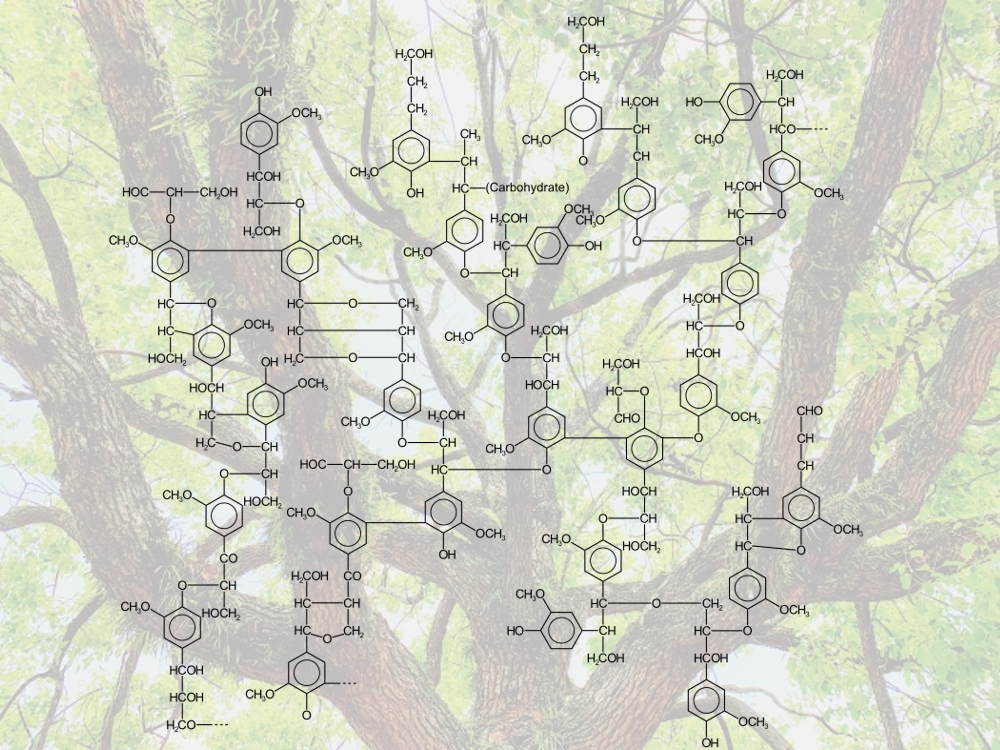
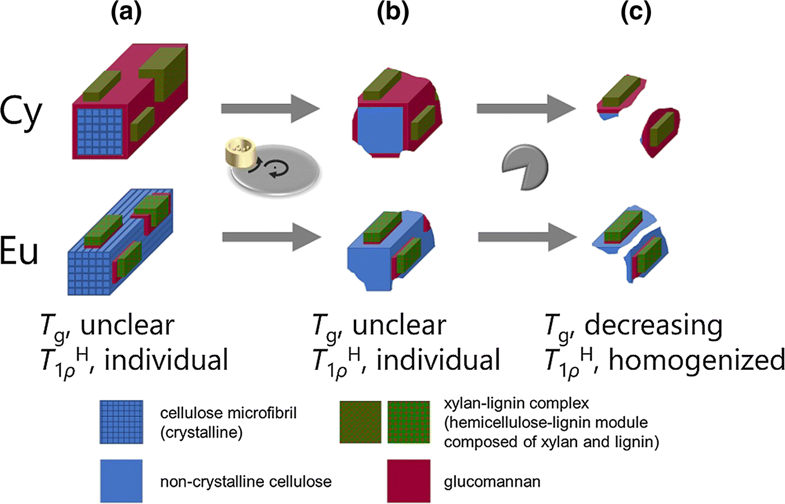
Development of bio-based functional materials
- Development of cellulose derivatives with photoelectric conversion function (application to solar cells and organic EL materials)
- Development of cellulose liquid crystal mechanochromic composites that memorize pressure history and respond with circularly polarized light
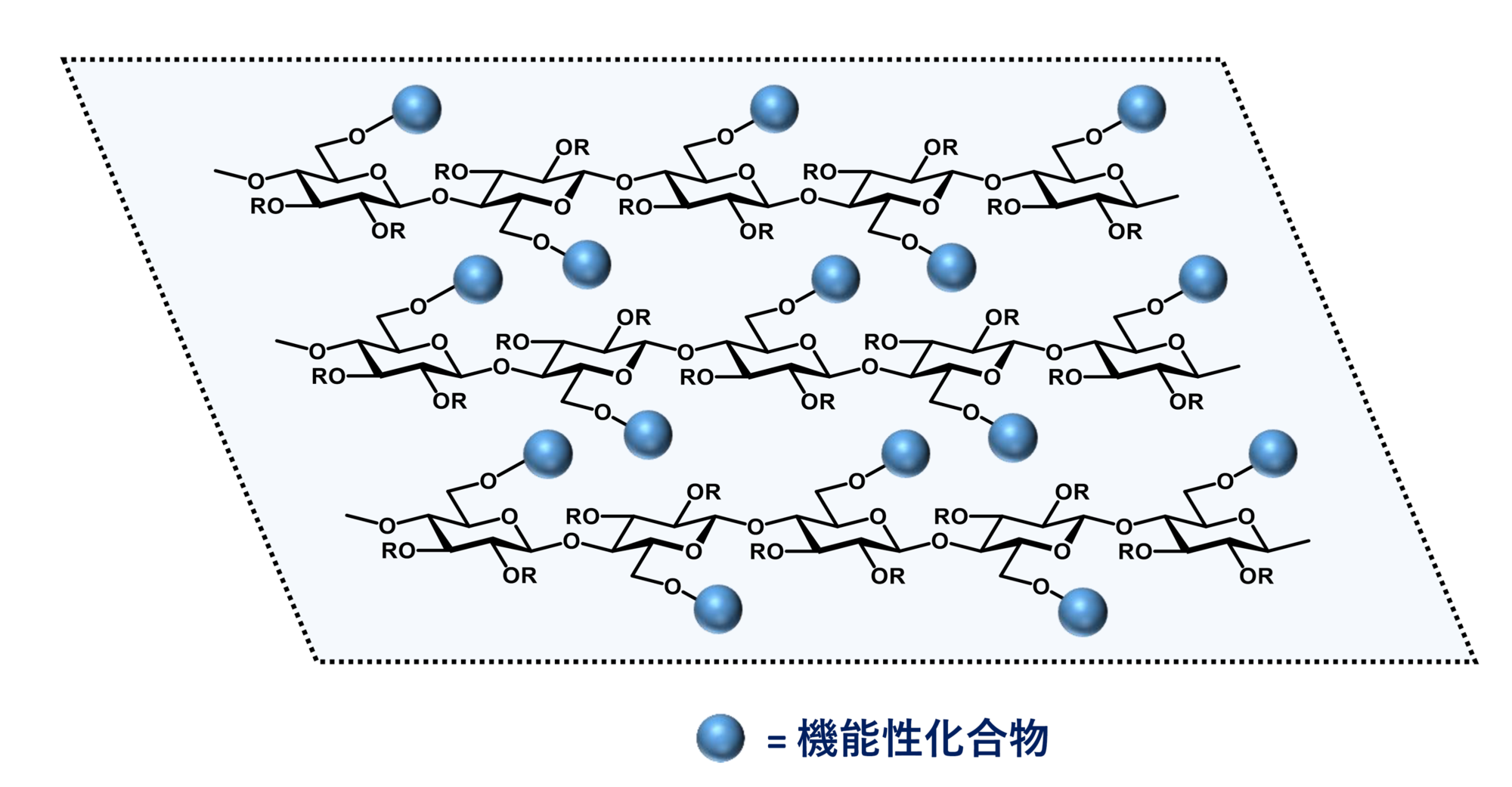
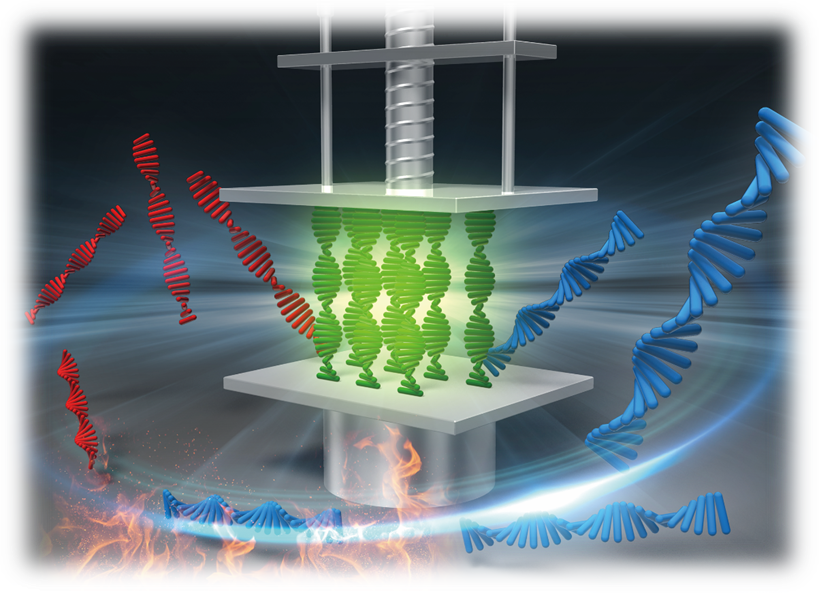
Utilization of bio-based nanomaterials
- Conversion of cellulose nanofibers (CNF) into functional materials through simple processes
- Development of life science materials (temperature-sensitive high-stretchable gel, cell culture substrate, diagnostic paper, etc.)
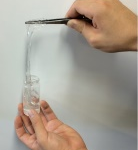
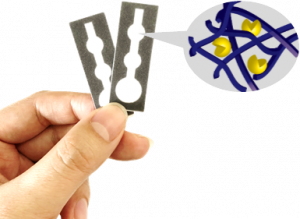
Basic research on existing processes and products in biological materials-related industries
- Development of low environmental load electrolytic reaction of lignin aiming at application to pulping pretreatment
- Elucidation of how additives (compatibilizers) work as key to improving physical properties of wood/plastic composites (WPC)
